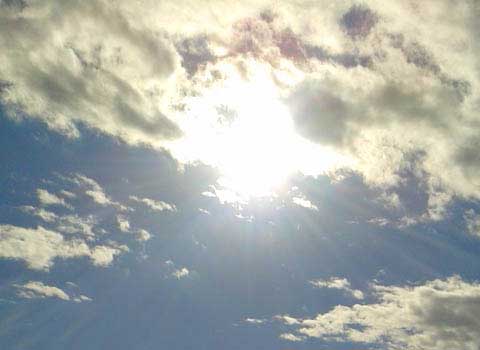Vehicle drivers depend on good visibility. Glint and glaring has the potential to impede the visual perception, which can cause traffic disturbances and accidents. Drivers and pilots of cars, trucks, trains and airplanes could overlook obstacles, other vehicles, light signals or traffic signs (disabiltiy glare or physiological glare). The solar irradiation with an unusual intensity and from an unusual direction can also disturb neighbors of the installation (discomfort glare or psychological glare).
Reflective Glint and Glare

Why a Solar Glare Assessment?
Large reflecting areas such as glass or metal facades or PV-plants can direct sunlight to places where people at work are blinded on a large-scale and thus experience discomfort glare. Since changes on these installations after construction are usually costly, the execution of a glaring survey is recommended when in doubt.
The glint and glare study helps to assess the dangers resulting from the planned installation. The calculation allows the quantification of reflection parameters (when, how often, from which direction and how long glaring should be expected). It assists mitigation of dangers and setting unreasonable fear from glaring into perspective.
Savings with a Glint and Glare Study
A solar glare analysis helps to avoid solar panel glare and thus save construction costs by getting it right the from the beginning. Based on a submission plan the survey can predetermine glaring and thus suggest cost-efficient solutions already in the planning phase. But also existing plants with a glaring hazard can be improved reliably and cost-efficiently with a solar glare calculation. This is why a glint and glare study for large scale PV-plants located close to traffic routes or inhabited areas is often mandatory.
Support with building permits
While earlier the standards and guidelines for glaring from artificial light where employed (e.g. BS 5489, CIE 150, DIN EN 12665) just recently the respective guidelines especially made for the glare from solar plants have been published. In Germany the Light-Guideline (Licht-Leitlinie) issued by the Ministry of Environment defines limits for reflective solar glare, especially with respect to solar power plants. In Austria regulation OVE R11‑3 (from the Austrian electrical engineering association) provides rules and methods for the analysis of the glaring from PV power plants. In Switzerland the "guidance for the notification and approval procedurefor solar installations" (Leitfaden zum Melde- und Bewilligungsverfahren für Solaranlagen) lays out the process and parameters for solar glare assessments.
A professional assessment helps to quantify the physical facts, collect all relevant influences from the environment, gives recommendations and thus helps to reduce potential uncertainties. Our Glare Assessments are compliant with both of these directives and we do provide all necessary parameters like point of time, duration and line of vision angles. Consequently, we are able to analyse the issue of the dazzling effect clearly and concisely, thus supporting rapid and definite decisions in the building permitting process.
Glare Calculation
The quantification of the dazzling effect is essential for the estimation of the immission dose (strength and duration). Especially the duration of immission and the direction of the glare are essential factors to allow an assessment of its risk potential. Zehndorfer Engineering is leading in the area of reflective glare calculation and is able to calculate glaring reliably and in detail based on building plans.
Read more on glare calculation on the next page...
How we can help you
Zehndorfer Engineering prepares your glint and glare assessment by means of cutting-edge software technology. We support you in your building permit process and we are able to answer all questions regarding solar glaring. As advisor to the court of law we are able to lend techical support to administrations. We will gladly clarify with you if a glaring survey is necessary for your construction project.
Jakob Zehndorfer is Expert Witness for Glare Assessments at the Austrian Court of Law.
Reference Projects
Solar Glare Assessment at Vienna Airport
The Glint and Glare Study showed an essential glare towards the air-traffic control tower. By turning the PV panels, the glare could be completely avoided. Sind the glare study was commissioned in an early phase of planning, the necessary changes were quick and without any increase in material costs.Dazzling of the Germen Railway in Landshut
For the planned PV-installation, neighboring a railroad track of the Deutsche Bahn, a glint and glare study was ordered. It consisted of the calculation of glare duration, glare time and the angles between reflecting surfaces and train heading as well as the angel between reflecting surfaces and the position of the sun.
Glint and Glare Study for the German Autobahn
The glint and glare towards road traffic on the German highway A3 had to be calculated. Glare duration, travel time and viewing angles were to be evaluated. The calculation shoed, that no danger of dazzling of road traffic was prevalent.
Links
Solar Glare Assessment - The Shard [1.3MB]
Railway Eye - Glaring from the Shard
Solar panels cause glare for air traffic controllers
Folder: Glint and Glare Analyiss


